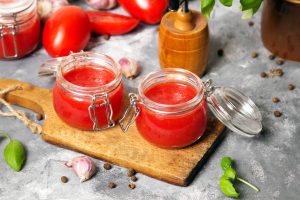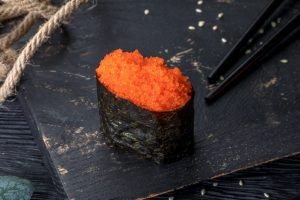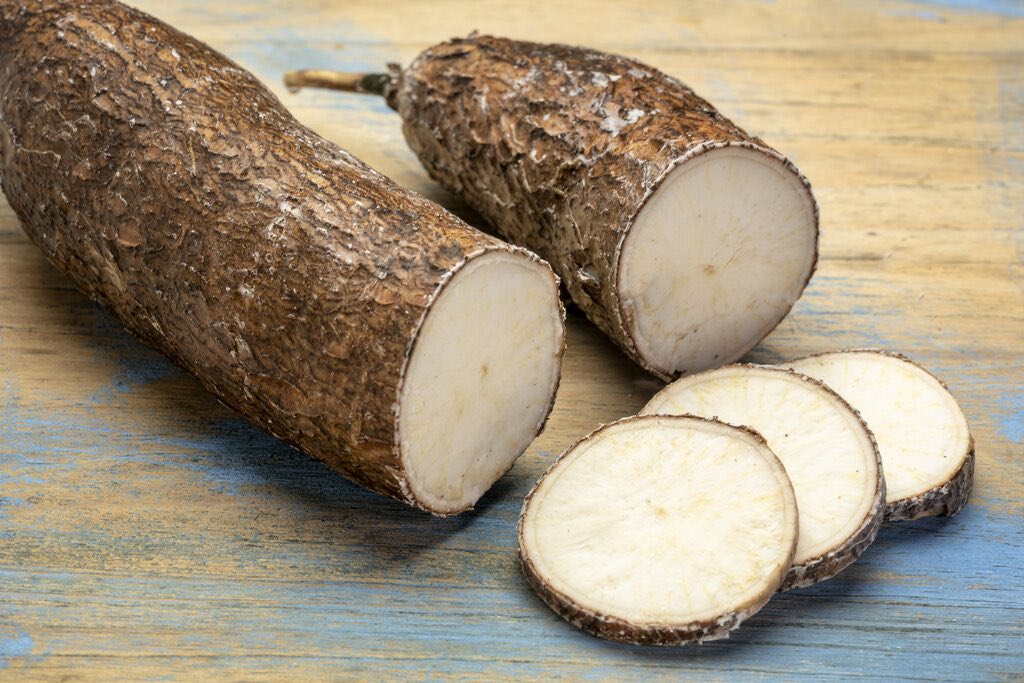
Yuca (pronounced as yoo-ka) also known as cassava or manioc, is the root of the cassava plant. Yuca, yuca root, and cassava root all refer to the same thing. It generally grows up to 6 to 12 inches and has white or slightly yellowish flesh with rough, bark-like skin. Yuca is a root vegetable, but it is also an indispensable ingredient to make boba or tapioca pearls, the sweet chewy essential in your bubble tea recipe!
Origins of Yuca
Yuca draws its roots from southeast of the Amazon basin and is also native to Brazil, South America, and parts of Asia and Africa. As it becomes increasingly popular, many Latin American dishes have yuca in them.
Because it is high in carbohydrates and has drought-resistant qualities, it is also a major staple food in less developed countries. Currently, it provides the basic nutrition required for more than 800 million people around the world.
Types Of Yuca
Usually, we distinguish types of vegetables by their appearance. But with yuca, it is determined by the amount of naturally occurring cyanide it contains. Research shows that there are eight varieties of yuca or cassava roots, but they are mainly distinguished by whether they are sweet or bitter. Sweet varieties are known for their mildly sweet taste that comes from having lower levels of cyanide. Authorities state that sweet varieties may contain less than 50 mg per kilogram on a fresh weight basis.
Bitter varieties look similar to their sweet counterpart. However, it has a slightly more bitter taste because of higher levels of cyanide – up to 400 mg per kilogram – within the range of toxic levels. That said, you should never eat it raw. You have to make sure to prepare it properly before it is safe for consumption.
What Does Yuca Taste Like?
Generally, sweet yuca has an earthy and nutty flavor with a hint of sweetness whereas the bitter variety has a slightly stronger bitter taste. It also has a grainy texture, similar to that of potatoes.
Health Benefits of Yuca
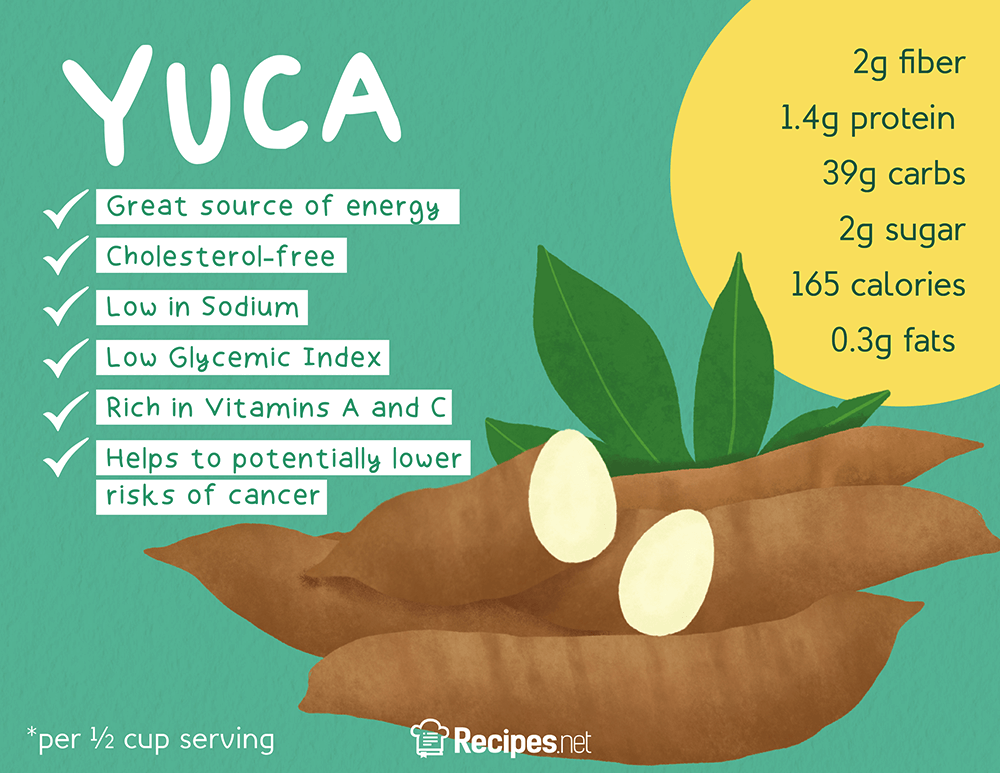
Yuca is high in carbohydrates, low in fat and sodium, and an excellent source of nutrients. It also contains high amounts of Vitamins A and C, choline, and antioxidants to regulate metabolism and potentially lower the risk of cancer.
One of the many yuca root benefits is being diabetic-friendly. It has a low glycemic index and effectively controls blood sugar levels. Half a cup of it contains 165 calories, which is higher than sweet potatoes and potatoes, making it a great energy source.
How to Prepare Yuca
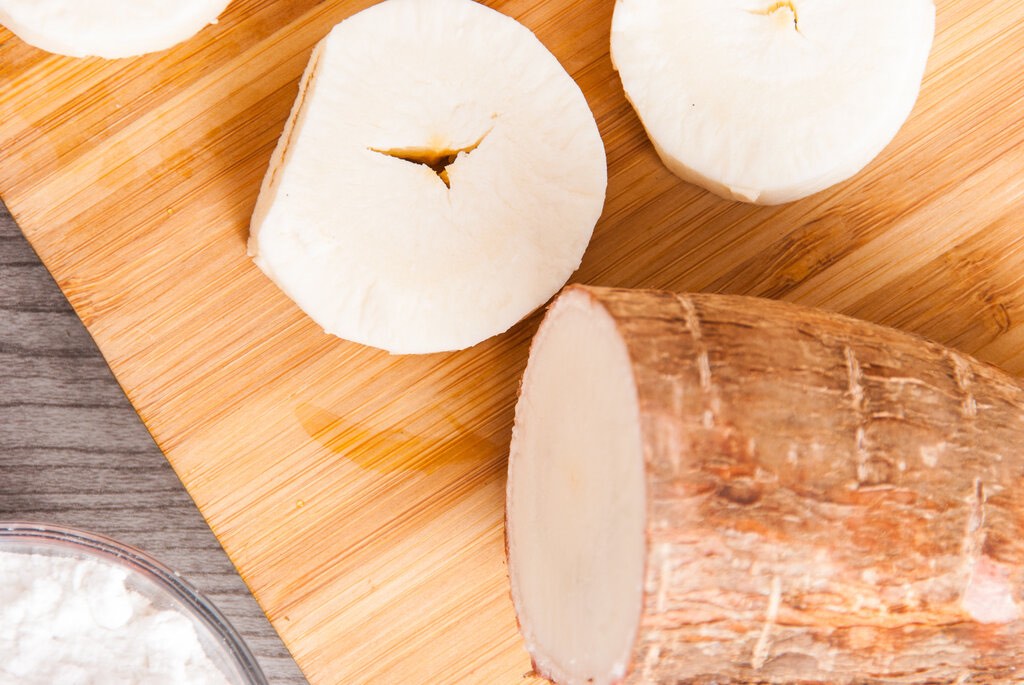
The most important thing about cooking yuca or cassava roots is the preparation due to the cyanide found in its plant, skin, and root. Sweet ones, which you can use for popular Filipino desserts such as Filipino cassava cake, are slightly easier to prepare.
Simply remove the skin and core, then thoroughly boil. However, the bitter variety requires more attention as its initial levels of cyanide are high.
Here are the steps to help you safely remove cyanide in a bitter yuca:
Rinse and remove the skin
First, rinse it thoroughly before drying off. Then, cut it horizontally into segments that are about three to four inches long. Stand the segment up on its end and slice vertically along its circumference until the skin has been completely removed. Repeat for the rest of the pieces. We recommend using a knife but feel free to use a normal potato peeler.
READ ALSO:10 Best Potato Peelers For Your Kitchen
Studies have shown that most cyanides are found in the yuca peels and some in the pulp. Hence, removing the skin will help to reduce at least 50% of cyanide levels.
Remove the core
After removing the skin, we need to remove its core. To remove its core, stand each piece up on its end and cut it half lengthwise.
Cut the two halves half lengthwise again. Now, you will have four long sticks from each piece with the core exposed. Just as how you would core an apple, remove its core.
Soak It in Water
Now that you have peeled it, removing cyanide from the pulp is the next crucial step. Before boiling, make sure to soak it for 3 to 4 hours. This helps to turn cyanide compounds soluble so that leaching and fermentation can happen to easily draw out the cyanide.
Boil for 2 to 3 Hours
Once soaked, you can begin boiling them. When you boil yuca, it destroys the enzymes of the remaining cyanide in the pulp and is released as volatile hydrogen cyanide gas.
Boil them for about 2 to 3 hours and it is ready to be used in your dishes!
How to Cook Yuca and Recipes to Try
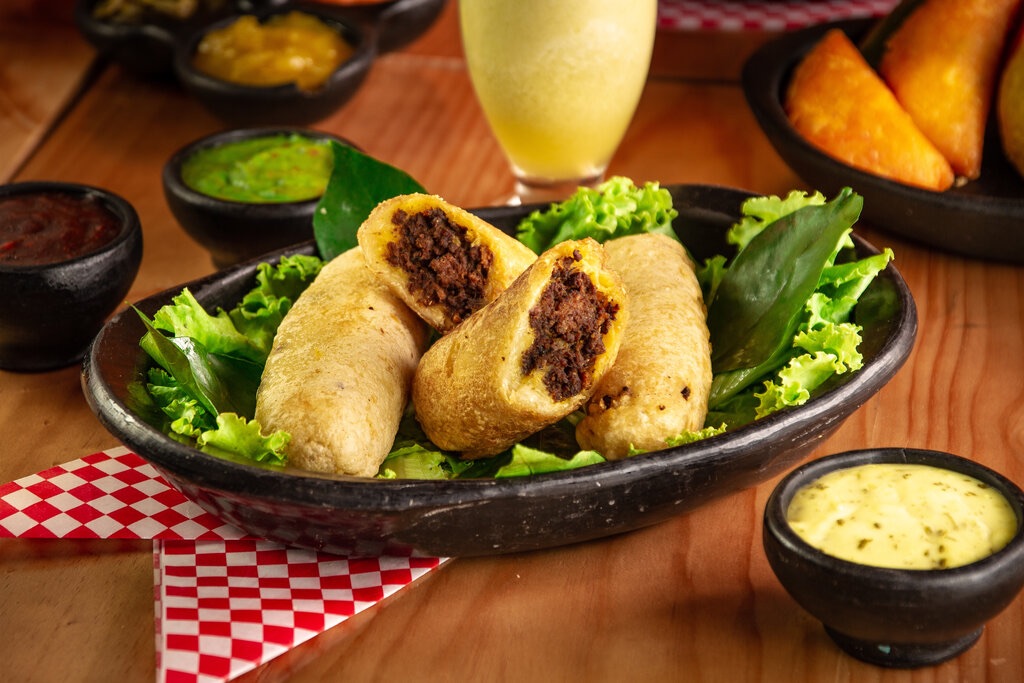
Yuca or cassava roots are one of the most versatile vegetables with diverse ways of cooking it. Treat it as you would a potato but more.
After removing the cyanide, you can steam, oven bake, fry, or mash it. Make it into a stew, a seasoned paste, or bread, there are limitless ways to incorporate it into your dishes. There are so many good recipes out there but here are some of our recommendations that yu-can try!
- Yuca Fries – One of the best substitutes for the usual potato fries, yuca fries are creamier and have more texture in every bite. Just as how you would make fries at home, they are pretty much made in the same way – boiled with salt and then fried in a frying pan.
- Pasteles de Yuca – Ideal for any house party, this Puerto Rican dish is served with achiote oil. It is a seasoned yuca root mixture filled with savory pork and wrapped in banana leaf. Albeit slightly more tedious, this delectable dish is worth a shot at making.
- Pan de Yuca – If a heavy meal is not what you are looking for, how about a light snack? This Ecuadorian yuca cheese bread is made from yuca flour, eggs, butter, and cheese served with a side of yogurt dip. For a crispier texture, grill your bread on a pizza stone.
- Yuca Con Mojo – This classic Cuban dish is boiled yuca doused in hot garlic mojo (also known as magic) sauce. With four simple steps and a handful of ingredients, this is perfect for a quick but satisfying meal.
- Nuegados de Yuca – To curb your sweet cravings, this dessert is just right for you. It is traditional fried donuts from El Salvador served with panela honey, a sauce made from sugarcane juice.
READ ALSO: 21 Sweet Mexican Desserts You Have To Try
Yuca vs Yucca vs Tapioca
Yuca is also one confusing vegetable. Because of its almost matching spelling, we may mistake yuca with yucca (pronounced yuhk-a) – a southeastern United States desert plant. Its comparable size and shape to a sweet potato also tend to confuse people between these two. Some even mistake it with its cousins, yam, and potato.
You may also wonder, are yuca and tapioca the same? Yes, although not entirely. Yuca and tapioca are from the same plant. Yuca is the root and tapioca is the starch extracted from the starchy part of yuca before it is dried down into powder that can be used to make tapioca pearls. What about tapioca flour and tapioca starch? Well, they are the same thing, just a difference in labeling. So fret not if your recipe requires tapioca flour and you only have tapioca starch in your pantry!
Buying and Storing Yuca
Yuca is not rare and can generally be found in grocery stores such as Walmart or co-op, and Latin American food markets. You can find them in the produce aisle, close to where the potatoes and sweet potatoes are. You can also find frozen peeled ones in the refrigerated section. Although many countries cultivate yuca, here in the US, most are imported from Costa Rica.
When you are at the grocery store, do not be in a hurry to pick whatever yuca you see lest you get rotten ones! Here are some tips on how to pick the fresh ones:
- It should feel firm and free from molds or blemishes.
- The skin should have a layer of wax to preserve it for a longer shelf-life.
- Break off a small part of the end of the yuca. The flesh should be white or slightly yellow. If you notice any discoloration or black spots, discard them immediately.
- Rotten ones will also give off a rather foul smell. Try smelling them before buying.
Was this page helpful?
Read Next: 19 Japanese Desserts to Make at Home




